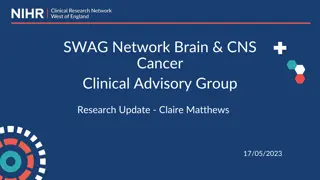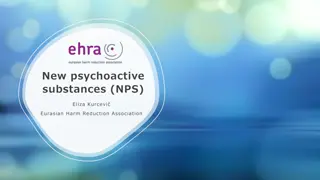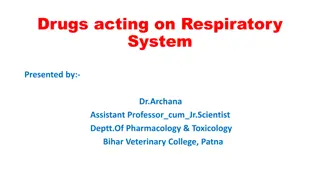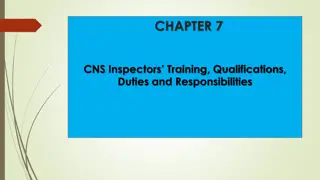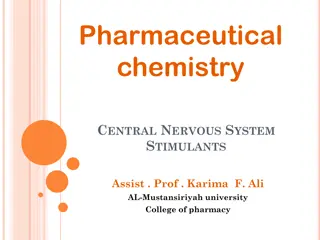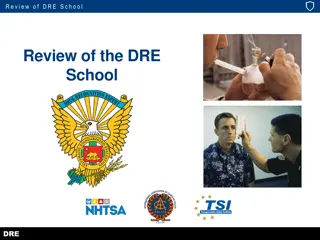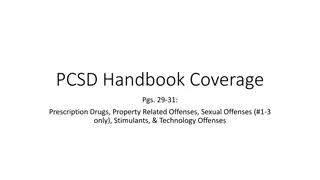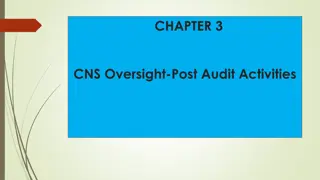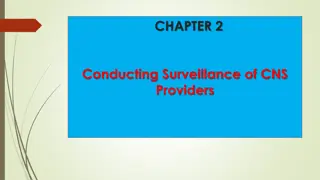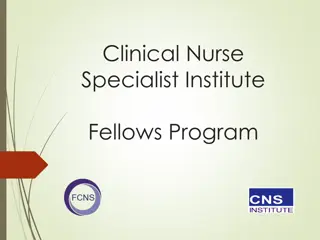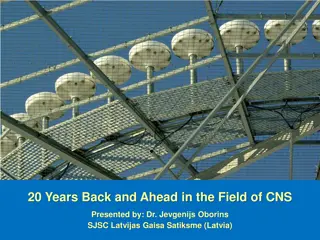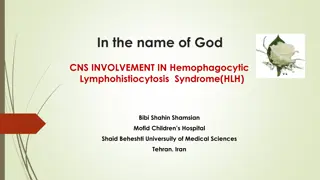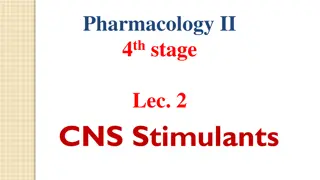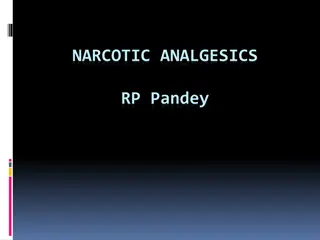Understanding CNS Stimulants: An Overview
Central Nervous System (CNS) stimulants are drugs that stimulate and improve brain functions. They counteract CNS depression caused by various factors but can have adverse effects if overdosed. Categories include psychostimulants, brain stem stimulants, convulsants, and psychotomimetics. Examples such as methylxanthines, amphetamines, and methylphenidate have specific uses and effects on the CNS.
Download Presentation

Please find below an Image/Link to download the presentation.
The content on the website is provided AS IS for your information and personal use only. It may not be sold, licensed, or shared on other websites without obtaining consent from the author. Download presentation by click this link. If you encounter any issues during the download, it is possible that the publisher has removed the file from their server.
E N D
Presentation Transcript
Analeptics and other CNS stimulants Dr. Kumari Anjana Assistant Professor Deptt. of Veterinary Pharmacology & Toxicology Bihar Veterinary College, Bihar Animal Sciences University, Patna
C N S stimulants Central nervous system stimulants are drugs that stimulate the CNS and/or improve specific brain functions. These drugs are relatively non-specific in action and affect all parts of the CNS when given in sufficient dosage. Although stimulation of CNS can be produced by large heterogeneous groups of natural and synthetic substances, only few are used therapeutically because of lack of selectivity, side/adverse effects, or potential for abuse in humans. These drugs are used to counteract the excess depression of CNS caused by over dosage of anaesthetics and toxicity of CNS depressant drugs or some poisonings. Death under these conditions results from central respiratory or vasomotor failure or both. Over dosage of CNS stimulants causes convulsions, can be counteracted by giving anticonvulsants.
1.Psychostimulants/Cerebral stimulants--methylxanthines (caffeine), amphetamines and methylphenidate. 2.Brain stem stimulants/Analeptics--doxapram, bemegride, leptazol and nikethamide. 3. Convulsants- strychnine, brucine, picrotoxin, bicuculline and leptazol. 4. Psychotomimetics/Hallucinogens-- cannabis, lysergic acid diethylamide and mescaline
Methylxanthines: Group of naturally occurring alkaloids present in certain beverages and include caffeine, theophylline and theobromine. These drugs have xanthine nucleus and are related to purines and uric acid. Caffeine is present in coffee (Coffea arabica), tea leaves (Thea sinensis), cocoa bean (Theobroma cacao), and kola nut (Cola acuminata). Theophylline is present in tea. Theobromine in cocoa. The xanthine sstimulate all parts of the CNS, acting principally on higher centres to increase mental activity, alley drowsiness and fatigue, and reduce reaction time to sensory stimuli. Caffeine and theophylline also stimulate a number of medullary centres including respiratory, vagal and vasomotor centres. Out of these naturally occurring methylxanthines, caffeine is mainly used as a CNS stimulant.
Amphetamines: Amphetamines are synthetic central sympathomimetic agent having marked CNS stimulant and anorectic effects. These drugs include dextro-amphetamine (d-amphetamine) and methamphetamine. It acts by release of endogenous nor-adrenaline. Also relaxes the bronchi due to sympathetic actions. Small animals: 2 mg/kg sc. Large animals: 100-300 mg/ animal sc.
Methylphenidate: Methylphenidate is chemically and pharmacologically similar to d- amphetamine. It produces increase in mental activity at doses which have little action on other central and peripheral functions. It is used primarily in human medicine for hyperkinetic children (attention deficit disorder) in whom it improves behaviour and learning ability.
Analeptics Analeptics are drugs that act at the level of brain stem and stimulate medullary respiratory centre. These agents have resuscitation value in respiratory depression, coma or unconsciousness. The term analeptic is derived from Greek word analeptikos that means restorative.
Doxapram Primarily a respiratory stimulant like nikethamide (relatively more selective on respiratory centre than other analeptics). dose in dog: 1-2 mg/kg IV after inhalational anaesthetics 2-5 mg/kg IV after intravenous anaesthetics 1-5 mg (total) IV, SC for apnoea in new bourns. For calves and foal - 40-100 mg (total) IV, SC or by sublingual root.
Nikethamide: stimulates chemoreceptor activity in the carotid and aortic bodies, which reflexly stimulates respiratory centres primarily and vasoconstrictor and vagal centres secondarily. Dose- 22-44 mg/kg, PO, IV, IM, SC Bemegride: Direct stimulant of respiratory centre. Dog: 15-20mg/kg IV Strychnine: Alkaloid of seeds of Strychnos nuxvomica. It is a powerful stimulant of CNS causing severe spinal convulsion (convulsive poison). Acts through antagonism of postsynaptic inhibition mediated by glycin in CNS (competitive antagonist of glycine in motoneurons and interneurons in spinal cord).
Picrotoxin: It is a non-nitogenous substance obtained from seeds of Anamirta cocculys (fish berries). A potent convulsive agent acts by antagonism of presynaptic inhibition in CNS mediated by GABA. Pentylenetetrazol: A potent convulsive. It acts through marked reduction in neuronal recovery time resulting in repetitive discharge following a single stimulus; interferes with GABAergic inhibition. Pentylenetetrazol, strychnine and picrotoxin have no therapeutic use, but used only as experimental tools to produce convulsions.



